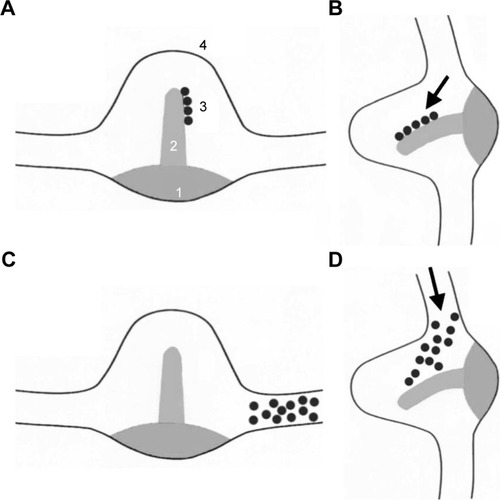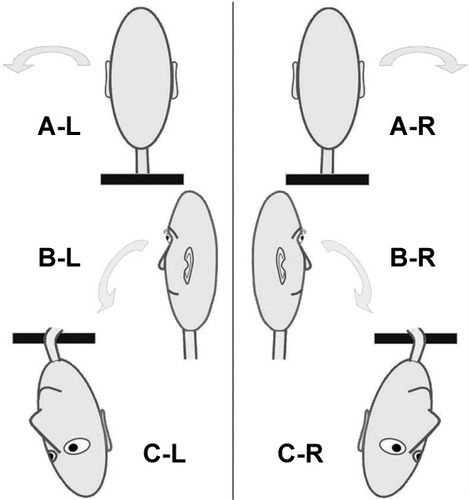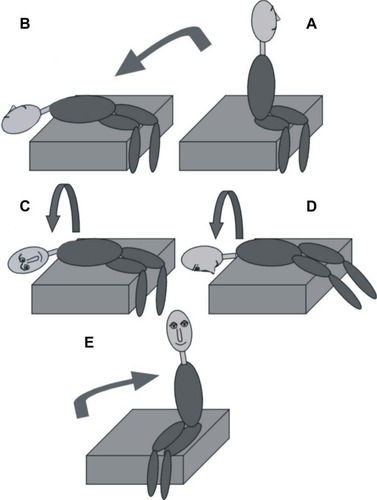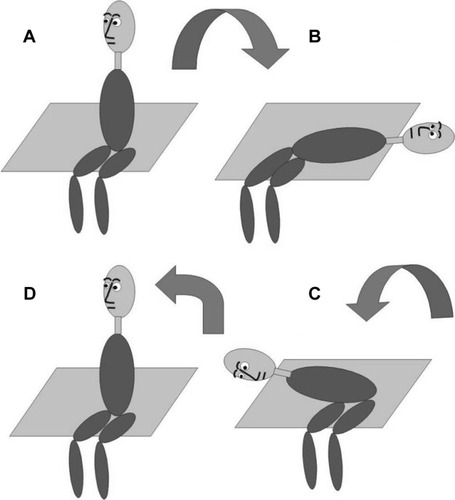Figures & data
Figure 1 Theories of posterior semicircular canal stimulation in BPPV.
Abbreviation: BPPV, benign paroxysmal positional vertigo.

Figure 2 The Dix-Hallpike test, for the left (L) ear on the left panel and for the right (R) ear on the right panel.

Table 1 Diagnosis of the involved semicircular canal and the side of involvement, according to the appropriate diagnostic maneuver
Table 2 Diagnostic test, characteristics and treatment of BPPV types
Figure 3 The Epley canalith repositioning procedure when the posterior semicircular canal of the left ear is affected.

Figure 4 The Semont maneuver when the posterior semicircular canal of the left ear is affected.

